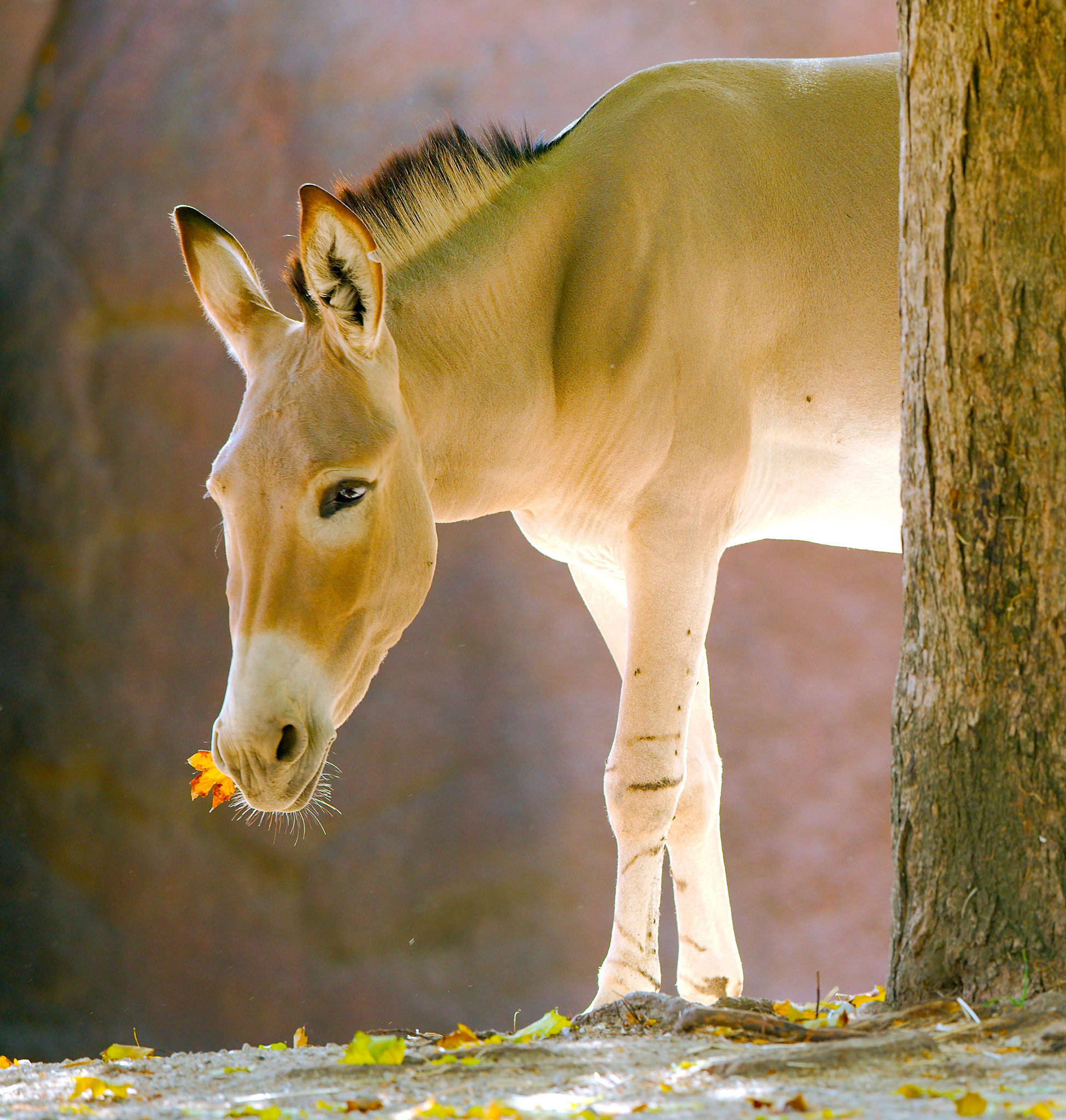A donkey sensed a hungry wolf
was slithering about,
so he began to limp and moan
until the wolf cried out:
What makes you limp, my donkey friend?
Why such a mournful bray?Oh, wolf, this thorn stuck in my hoof
has cut my foot all day.
And it would cut your tender mouth
If you devoured me,
So pull this thorn before you bite!
Avoid that agony!Therefore, wolf picked up that donkey’s hoof
and looked up underneath.
And WHAM! The donkey kicked just once
and wolf lost all his teeth.Ah, what a fool I was, lisped wolf,
as donkey turned to flee,
to trust the words of anyone
who lives in fear of me.
This fable of Aesop, the famous Greek writer, draws attention to a quality of donkeys that may sound strange to modern ears: their intelligence. Donkeys are in fact a highly brilliant animal despite popular misconceptions and stereotypes.
We are used to thinking of donkeys as animals fully subjugated to serving humans. Yet donkeys enjoy a respectable position in ancient myths and religions, which showcase aspects of their nature less well known today.
Domestication of donkeys

Somali wild ass. Image credit Josh More, CC BY-NC-ND 2.0
The history of donkeys is closely tied to the history of human civilization. Somalian wild asses are the ancestors of the modern domestic donkey. These asses are still alive today, but are listed as critically endangered on the IUCN Red List.
The ancient Egyptians and the inhabitants of Libya started the process of domestication. Donkeys were first used by people in agricultural activities, and demand for their labor gave them a high purchase value. In Roman times, donkeys were really expensive, costing up to 400.000 sesterces, equivalent to tens of thousands of euros.
Foolishness or rebellion?
Despite the critical roles they played in agriculture, travel and transport throughout human history, donkeys are often the butt of jokes and garner little respect. Donkeys have always suffered a reputation as “stupid animals”. As early as the sixth century BCE, Isidore spoke of donkeys as “lazy and foolish” and Homer described them as “tardus”. The Romans referred to people who could not read and write as “donkeys”. Well known is the phrase “Quid nunc te, asine litteras doceam?” (Should I teach you, donkey, how to read and write?), commonly used to mock students in the schools of the Roman Empire.
In fact, the perception of donkeys as stupid animals comes from their stubbornness. Although we are used to thinking of donkeys as animals in the service of humans, they have a difficult character and are not easy to domesticate. Their characteristics are better understood as “rebellious” than “stupid”.
Because of this tendency to rebel, donkeys who have helped with human labor have always suffered great abuse to make them obey commands. Historically, the same was true for schoolchildren deemed rebels who, as punishment for flouting the rules, were forced to wear the ears of a donkey.
A symbol of sexuality

Pinocchio transforming into a donkey, from a 1911 illustration. Public domain.
While donkeys’ associations with stubbornness and stupidity are well-known, only a handful of people know that in ancient mythology donkeys were also a symbol of sexuality. In the famous Roman book Metamorphoses by Apuleius (124-170 CE), the leading character Lucio, a man who follows his lowest instincts, is accidentally turned into a donkey. His life becomes a series of epic adventures which gradually ennoble him and contribute to his spiritual elevation. It is only at this point that he can once again become a man. Readers may be reminded of the vicissitudes of Pinocchio and his similar transformation into a donkey. Carlo Collodi’s 19th century Pinocchio stories were in fact inspired by ancient myths, and the wooden puppet, in the same way as Lucio, is portrayed learning from his experiences, growing spiritually and ultimately becoming human.
As symbols of sexuality, donkeys were associated not only with debauchery, but also morality and purification. Legend says that Priam, madly in love with Vesta – the virgin goddess of the hearth, the home, and family in Roman religion – would have tried to abuse her while she slept. His plan failed because of a sudden donkey’s bray that woke her up. Every ninth of June, on the celebratory day in honour of Vesta, donkeys were crowned and honoured for saving the goddess, and did not have to work.
Giver of immortality
Also little known in modern times, donkeys were once associated with perpetual youth. Many rich Roman women, including Empress Poppaea the wife of Nero (30-65 CE), bathed in donkey milk to stay young forever. The Greek writer Aelian (175-235 CE) tells a related story in De Natura Animalium (“On the Characteristics of Animals”). After catching Prometheus stealing fire from the gods and giving it to humanity, Zeus wishes to reward those who disclosed the thief’s name with an anti-aging drug, which he sends to them via donkey. Along the way, the donkey stops to drink from a water source, but a snake protests that the water belongs to him. The donkey shares the immortality drug with the snake as a gesture of kindness, inviting him to return the favor. The snake accepts the trade and allows the donkey to drink from his water.
Snakes are often associated with immortality due to the way they cyclically change their skin. This myth represents donkeys as givers of immortality… but only if we are nice to them!

Donkeys and people at the Dharma Donkey Sanctuary in India. Image credit Bonny Shah.
Featured image: donkeys at Dharma Donkey Sanctuary in India. Credit Bonny Shah.
Originally published on the International Organization for Animal Protection’s website.





